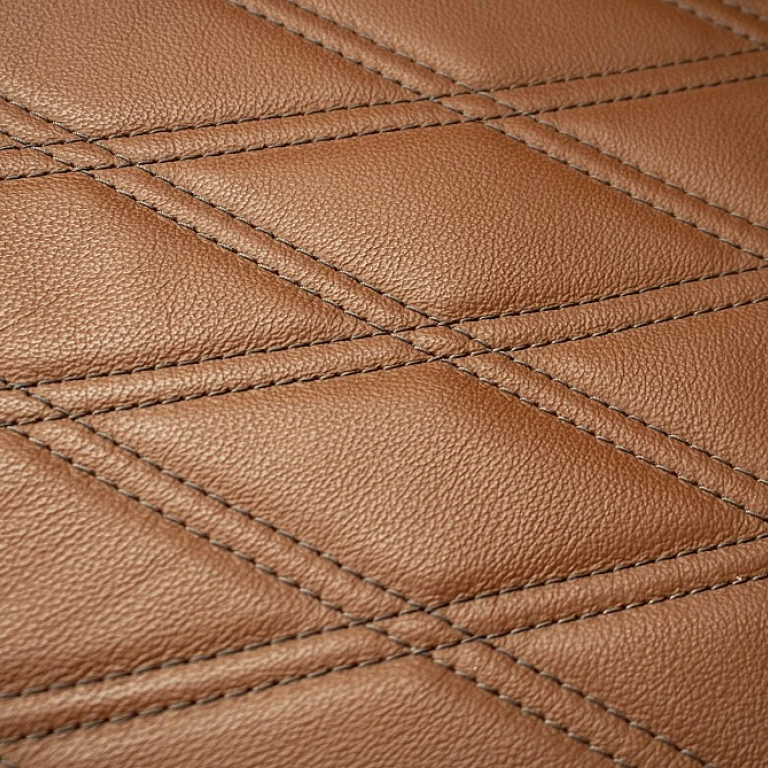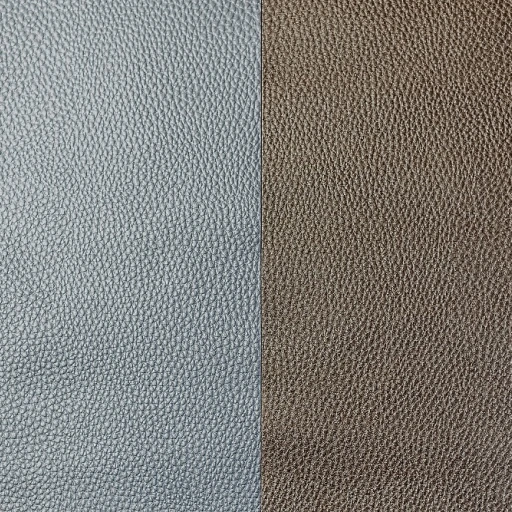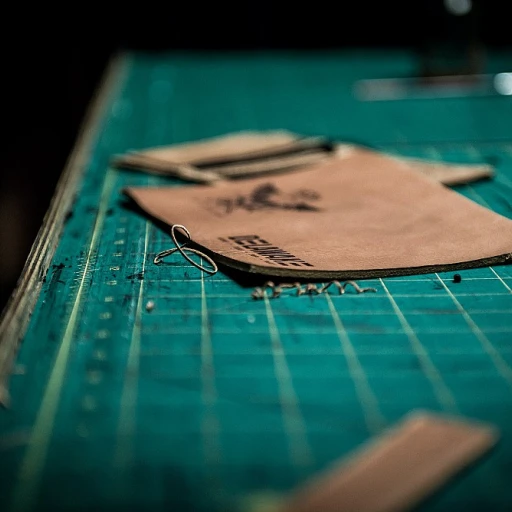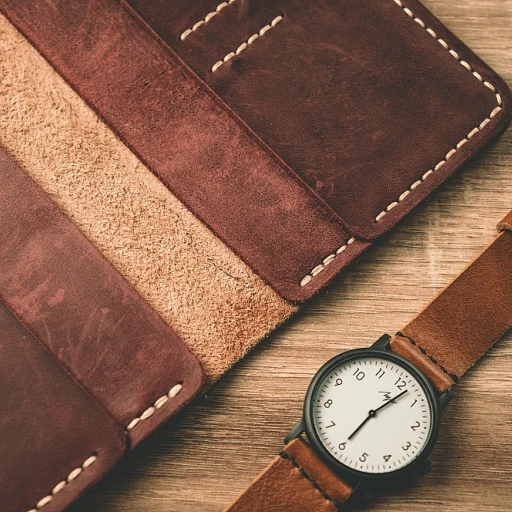Understanding the Leather Supply Chain
Exploring the Complex Web of Leather Supply
The luxury leather industry, renowned for its exquisite craftsmanship, hinges critically on a robust and intricate leather supply chain. Understanding the voyage of leather from its raw animal hides to the finished luxurious products we covet in stores is paramount. A key component is sourcing high-quality leather, which is a delicate dance involving multiple countries and regions renowned for their specific leather characteristics. The tanning process contributes immensely to the final product's texture, durability, and aesthetics, transforming raw hides into supple materials ready for fabrication. Veg tanned leather, in particular, has gained traction due to its organic processing method, which eschews harmful chemicals in favor of natural tannins derived from plant matter. This technique not only imbues leather with a signature tan pattern and rich texture but also addresses sustainability concerns (veg tanned leather is shaping sustainable luxury). Leather suppliers maintain a vast range of products, from regular and sale items to high-end exclusive pieces. This diversity ensures that makers have a full spectrum of options when selecting leather for their luxurious creations. However, not every type of leather is readily available or fits in a regular price range, with some units being priced in the USD thousands due to their unique sourcing and processing methods. This often raises discussions on unit price variability when items are put up for a price sale, affecting both the regular price and sale price for end consumers. In a world where species preservation and ethical sourcing have become crucial, transparency in the supply chain offers buyers a clear view of the origins of the leather used in their cherished luxury goods. It ensures that what was once just a unit price on a tag becomes part of a broader narrative of craft, ethics, and sustainability, making it vital for the luxury sector to continually adapt to both traditional and contemporary needs. Each piece of leather tells a story from raw product to sleek, finished good – an odyssey as nuanced as the skin patterns etched onto the hides themselves. Embracing these complexities and maintaining a balance between tradition and innovation will define the future of the luxury leather market.Challenges in Sourcing Quality Leather
Ensuring Quality in Leather Sourcing
In the world of luxury leather goods, sourcing high-quality leather is paramount. The journey from raw materials to the finished product is complex, involving various stages that demand precision and expertise. Leather, being an organic material, can vary significantly in quality, and this variation affects the final product's price per unit. Regular assessments and reviews of the supply chain can alleviate uncertainties and ensure consistent quality.
Luxury brands often face challenges like irregular supply and price fluctuations. These issues can make certain leather types or patterns temporarily unavailable or influence product prices. A quick view of the maker's leather history can provide insights into the frequency of these occurrences and offer solutions, such as diversifying sourcing options or investing more in veg tanned leather, commonly praised for its sustainable qualities. Learn more about how veg-tanned leather can redefine the luxury leather goods industry.
Understanding the significance of veg tan leather tooling in creating unique patterns is just one aspect of ensuring quality. Tooling patterns require skilled craftsmanship and a reliable supply of choice leather. Nevertheless, each product crafted holds the potential to command a price that reflects its artistry, from regular price items to those that proudly display a sale price.
In conclusion, addressing the challenges associated with leather sourcing necessitates a balance between traditional practices and modern demands. Companies must navigate price dynamics diligently while upholding their reputation for quality. This ensures that every leather product, be it a tan-colored shirt or any other apparel, meets the high standards expected by discerning customers.
Sustainability in Leather Production
Embracing Eco-Friendly Practices in Leather Manufacturing
Sustainability in leather production has become a priority for many luxury brands aiming to marry opulence with eco-forward methods. The regular price one pays at checkout isn't merely for a product's visual appeal but also for practices ensuring the Earth's well-being. This dual emphasis on quality and sustainability is increasingly shaping customer expectations, especially when considering options with sale price incentives. Among the various patterns, veg tanned leather stands out as a sustainable choice. This method uses tannins from plant materials, such as bark and leaves, rather than toxic chemicals. Not only does this process reduce environmental impact, but it also enriches the leather's natural hue with each piece acquiring a unique tan pattern. Leather makers often set regular price or unit price based on the ethical nature of these selections. Producers committed to sustainability often appeal to customers through transparency. Offering full details of their sourcing and manufacturing processes, including accessible quick view of their eco-friendly endeavors, builds trust and adds value to the price code. Reviews frequently cite these practices, reflecting the importance of eco-conscious decisions among discerning buyers. While some products might be unavailable or have a price unavailable due to sustainable material shortages, this encourages manufacturers to constantly innovate. The introduction of leather tooling and tooling patterns not only elevates product artistry but also ensures that the environmental footprint remains minimal. Coupled with options like free shipping, this beneficially impacts the price lineup by promoting a greener agenda. In sum, by opting for sustainable leather production, luxury brands can elevate the value perceived by customers, in much the same way a premium leather badge holder adds sophistication to style. With sustainability now integral to ensuring long-term success, viewing this shift as more than a regular sale strategy but as a transformative force within the leather supply market is crucial for future growth.Innovations in Leather Processing
Technological Advancements Reshaping Leather Processing
The landscape of leather processing has seen notable technological strides that aim to balance quality and speed, addressing demands for regular price and sale price products. These innovations enable leather goods makers to achieve precision and consistency in their products, improving both consumer satisfaction and the maker's reputation for excellence. Recent technologies have introduced automated leather tooling machines that can accurately replicate intricate tooling patterns, a task that was once labor-intensive and time-consuming. This not only quickens the production process, but also makes high-quality products more accessible at various price points, including regular and sale price, without compromising the craftsmanship involved in leather goods. Further, innovations like advanced leather tanning techniques have brought about a shift toward more sustainable options. Techniques such as veg tan not only provide a superior finish but also offer environmental benefits. With sustainable practices gaining traction, leather processing is gradually moving away from traditional methods to embrace these advanced solutions, ensuring the longevity and environmental viability of leather goods. Moreover, the implementation of cutting-edge software tools allows for quick view and real-time monitoring of the leather supply chain. This enhancement delivers greater transparency in unit price, ensuring that customers receive the best value for their investment. The visibility in product options and price usd categories provides consumers with a more informed and satisfying purchasing experience. Notably, the ability to easily view full details and patterns of leather through digital interfaces enhances the retail experience. Retailers can now offer customers a digital cart, allowing them to switch between product options swiftly, similar to an e-commerce platform, before committing to their purchase. This is significant in a market where price sensitivity varies widely. Overall, these technological enhancements represent a pivotal shift from traditional practices, ensuring that leather goods industries remain competitive and responsive to evolving consumer demands. Although tradition still holds a sacred place in the luxury leather market, the integration of modern technology into leather processing sets the stage for a future where both artisanship and technological advancements coexist harmoniously.Balancing Tradition and Modernity
Embracing Craftsmanship with Contemporary Flair
Navigating the luxury leather market requires a keen ability to balance time-honored traditions with the inevitable forces of modernity. Leather goods that boast artisanal craftsmanship are staples of luxury, showcasing intricate leather tooling and timeless patterns that resonate with discerning customers. These pieces often command a regular price or price USD that reflects their meticulous creation process, where every unit is crafted to perfection. However, a mere reliance on tradition might render products stagnant. In an age where quick view purchases and detailed product reviews shape consumer choices, brands need to integrate modern designs into their collections. The introduction of new patterns and colors, such as the versatile tan or the innovative veg tan, enables a fresh appeal while maintaining the deeply-rooted luxury aesthetics. Moreover, technology plays a significant role in amplifying leather production techniques. From advanced leather tooling machinery to innovative veg tanned processes, these advancements not only enhance product quality but also ensure a sustainable approach, echoing the sentiments previously discussed about sustainability. Moreover, affordability through diverse pricing strategies, like regular price and sale options, can widen the market reach. The presence of quick view online platforms and the option for free shipping frequently enhance customer experience, urging purchases. Interestingly, the fusion of traditional techniques with contemporary innovation often attracts a new generation of leather lovers, who prioritize both the heritage and the modern essence of a luxury product. The craftsmanship of the maker leather, when combined with fresh patterns and modern options, becomes synonymous with both tradition and modernity—each piece offering more than its unit price might convey at first glance.Future Trends in the Luxury Leather Market
Future Directions in Leather Craftsmanship
The luxury leather market is buoyed by changing global dynamics, and what’s emerging on the horizon signals a fascinating era for leather connoisseurs. Insightful trends suggest that leather goods will continue to evolve, guided by advancing technologies and shifting consumer preferences.
Demand for Personalization
The personal touch in luxury is becoming non-negotiable. Consumers now gravitate toward premium products that offer a slice of personalized identity, shifting the focus from mass-produced units to bespoke creations. From customizable leather tooling patterns to unique veg tanned finishes, the demand for individual expression is reshaping the luxury landscape.
Sustainability Takes Center Stage
The commitment to sustainable practices is seeping into the luxury leather domain. As discussed earlier, sustainable leather production gains traction, with the transition to eco-friendly options such as veg tan leather not just a choice but now a pivotal standard for makers. As the market grows, innovations in environmentally conscious leather processing are expected to maintain this trajectory, ensuring full integration into luxury brands.
Tech-Driven Crafting
Technical innovations continue to redefine the possibilities in leather craftsmanship. Automation and artificial intelligence are being harnessed for precision, efficiency, and creativity. This tech integration doesn't eliminate tradition but enhances craftsmanship, allowing makers to maintain a balance between handcraftsmanship and modern production methods.
Growing Digital Marketplaces
The digital landscape offers limitless opportunities to access, evaluate, and purchase leather goods. As more brands establish an online presence, quick views and in-depth product reviews become vital in influencing consumer decisions. Keep an eye on platforms offering regular price comparisons, sale alerts, and reviews to navigate this complex market effectively.
Evolving Aesthetic Trends
Lastly, aesthetics within the luxury leather market are witnessing constant shifts. Minimalistic designs are complemented by intricate leather tooling patterns and novel color palettes such as the timeless tan. This evolution reflects broader fashion trends, making leather goods a dynamic player in the fashion ecosystem.
In conclusion, the fusion of tradition with modernity, sustainability with sophistication, positions the luxury leather market as a forward-thinking, yet timeless domain.”



-large-teaser.webp)
